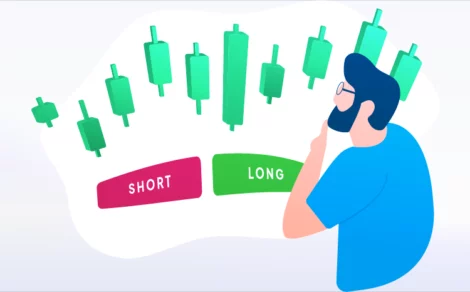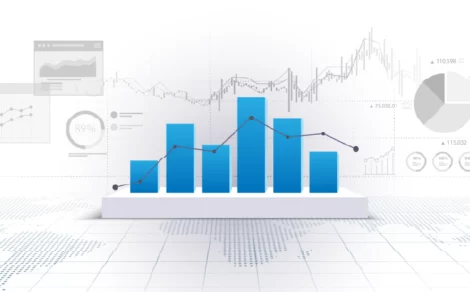Swing trading and day trading are the most commonly used trading techniques in the stock market these days. Both these techniques have their own set of features. Swing trading refers to buying a stock for a few days to weeks and selling it off. However, day trading indicates buying and selling shares on the same day.
Both trading styles have their similarities and differences. In this blog, we will delve deeper into swing trading vs day trading and discuss their differences, advantages and disadvantages.
What is Swing Trading?
Swing trading involves recognising an upcoming bull swing in stocks and commodities that will prevail from days to weeks. A trader can choose both techniques based on the market demand. Swing trading involves identifying and exploiting the swing in price and market, using the technical analysis method to determine the entry and exit decisions.
What is Day Trading?
Day trading refers to buying and selling a share on the same day. It involves making multiple trades on different stocks in a single day. This technique is highly dependent on technical scrutiny and extensive graphic chart examination. Analysing these dynamics helps identify similar patterns and find opportunistic entry and exit points.
Swing Trading Vs Day Trading – Key Differences
The following table highlights the differences between swing trading vs day trading:
| Category | Swing Trading | Day Trading |
| Time Period | It involves buying a stock for a period between 2 days to multiple weeks. | It involves spontaneous buying and selling of several stocks in a day and closing before the market closes. |
| Risk involved | Swing trading is more risky as it involves overnight holding of stocks. | Although day traders have to be glued to their screens for the entire time, it involves a lower risk of around 1%. |
| Aim | Swing traders analyse a stock and recognise its upward potential, waiting for a higher profit margin. | Their main aim is to make smaller profits in a short time and move on to the next trade. |
| Participation | Swing traders only give an hour or two each day. | Day traders are totally involved in the market and keep track of it until it closes. |
| Analysis | Swing traders analyse the market fundamentals and business performance of the company, paying less attention to charts. | They mostly focus on technical analysis and find graphic chart patterns for entry and exit points. |
Advantages of Swing Trading
Swing trading has various advantages when a person knows his goals and uses them strategically. Here are a few key benefits of swing trading:
1. High-profitability Potential
It has the potential to earn greater profits if the investor’s predictions fall in line. Overnight profits are sometimes very beneficial in this case.
2. Time Efficient
Swing trading is less time-consuming, as an investor has to be available only on a part-time basis and does not need to scrutinise charts deeply.
3. More Opportunities
Swing traders analyse both upward-going and downside-going shares. They invest in rising shares and wait for the falling shares to reach their bottom line to invest in them.
4. Brokerage Cost-effective
Swing trading has a time gap of days to weeks in between their transactions. Hence, traders do not have to pay brokerage costs every time, unlike day traders.
Disadvantages of Swing Trading
Here are a few disadvantages of swing trading a trader must keep in mind:
1. High-risk Quotient
Swing traders keep their shares overnight for multiple days in many cases. During such scenarios, the share price may fall, and the investor can incur a loss.
2. Fewer Investments
Swing traders have limited shares to invest in, as there are few shares in the market that go on a streak of highs for days when discussing short-term investments.
3. Lesser Margin
Swing trading holds a two-times margin on investments as compared to 4 four-times margin in day trading, increasing the cost.
Advantages and Disadvantages of Day Trading
Here is a list of advantages and disadvantages of day trading
Advantages
Here is a list of advantages of day trading:
1. Risk Handling
Here, traders trade on multiple shares and regularly check their status. It helps to balance the risk and maintain profits.
2. Profit from Multiple Stocks
Day traders can make huge profits by investing in profitable patterns for multiple shares. This can result in exponential profits.
3. Fees Efficient
Day traders wrap up all their investments on the same day before the market closes. This saves them from overnight charges.
4. Frequent Profits
Day traders can make small but frequent profits. These profits can add up to make a sweet sum for the day. These frequent trades can also cover up losses if made in one or two shares.
Disadvantages
Here are the disadvantages of day trading:
1. Time-consuming
Day trading needs constant attention from an investor as they have to analyse charts and graphical changes. This gets them into a full-time job until the market closes.
2. High Brokerage Cost
Multiple buying and selling of various stocks in a single day means a whole lot of transactions. This means high brokerage charges at the end of the day.
3. Un-profitable Market
Many day traders have it as their primary job. At times, the market is highly stable and does not show much upside and downside for days. It can lead to no profits/income for days.
4. Unpredictability
Day trading is a very high-paced trading practice that requires frequent decision-making. It may lead to huge, unpredictable losses. In some cases, it might lead the investor to lose his entire capital.
Swing Trading Vs Day Trading – What to Choose?
Both day trading and swing trading are examples of short-term trading strategies. However, they hold different features and profit quotients. Here is how you can choose among them.
1. Time Availability
While scrutinising day trading vs swing trading, one can choose by understanding the quantity of time they can offer. If they can devote their full time to trading, they can choose day trading. Otherwise, swing trading is appropriate for them.
2. Risk Tolerance
If a trader can trust their analytical skills and has a tolerance to handle overnight losses. They can choose swing trading, or else they can choose day trading.
3. Know Your Goals
If you want less risk but fast share transactions, day trading is your ally. However, if you believe in highly profitable and consistent growth trading, you should try swing trading.
Final Words
Swing trading vs day trading is a subjective decision to make in terms of trading based on speculations in the market and plenty of other factors. One must choose among them based on a comparison of their wants and offerings of the trading technique. Moreover, if you plan to invest in the stock market, you can open a free Demat account on Torus Digital.








